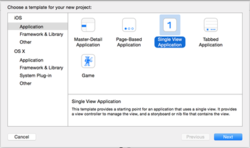| iOS SDK (iOS Software Development Kit) | |
|---|---|
| Icon representing SDK 26 | |
| Developer | Apple Inc. |
| Initial release | March 6, 2008 |
| Operating system | macOS |
| Platform | iOS, iPadOS |
| Available in | English |
| Type | Software development kit |
| Website | Apple Developer |
The iOS SDK (iOS Software Development Kit), formerly the iPhone SDK, is a software development kit (SDK) developed by Apple Inc. The kit allows for the development of mobile apps on Apple's iOS 17 and iPadOS operating systems.
Contents
- History
- Features
- Programming languages
- Java
- .NET
- Flash
- 2010 policy on development tools
- Mac Catalyst
- See also
- References
- External links
The iOS SDK is a free download for users of Macintosh (or Mac) personal computers. It is not available for Microsoft Windows PCs. The SDK contains sets giving developers access to various functions and services of iOS devices, such as hardware and software attributes. It also contains an iPhone simulator to mimic the look and feel of the device on the computer while developing. New versions of the SDK accompany new versions of iOS. In order to test applications, get technical support, and distribute apps through App Store, developers are required to subscribe to the Apple Developer Program.
Combined with Xcode, the iOS SDK helps developers write iOS apps using officially supported programming languages, including Swift and Objective-C. Other companies have also created tools that allow for the development of native iOS apps using their respective programming languages.
